So what camera did I keep? The Leica M 240 or Monochrom, and why?
UPDATE May 21st 2013 – This post is not even relevant as I once again have an M 240. I rented and used a Leica M-E for a while and it made me really miss the M 240 and I took my own “you only live once advice” and with a bit of luck I was able to buy one a reader was going to refuse delivery for from B&H. SO yes, I have teh M 240 again 🙂
As some of you may already be aware (if you follow my Facebook page) I have been in sort of a dilemma over the past 2 weeks. I have had the pleasure to actually own, both paid in full, the Leica M 240 and Leica Monochom camera. A luxury indeed and one that I was blessed to have. I wanted them both for longer term reviewing purposes but knew in the end one would have to go and one would stay, only due to the limitations of my funds and the fact that I really did not “need” both. But as time went on there was a problem… and that was that I wanted to keep both… and that was creating an issue right after Tax time 🙂
I assumed the choice would be easy as the M 240 does color or B&W imaging. It has the new body, the new features, the new LCD, the new shutter, the new frame lines, the new thumb grip and scroll wheel. It also has the new huge long life battery and if I ever wanted it, video or live view all for $1000 less than the simple, basic, all charcoal looking Monochrom that has NONE of those features for the extra $1000 it commands. Clear as a bell right?
A no brainer, at least it should have been. When shooting both I found things to adore about each body. I love the Monochrom due to that basic simplicity and the fact that it does one thing and one thing only which is to take fantastic Monochrome images in just about any light situation all while giving the rangefinder experience of the M9, M, etc. No matter what anyone says, the files from the MM are not the same as those from the M9 or the M 240. There are differences and when you start digging into those files you start to really appreciate what it offers.Shooting it at night is quite liberating as well because you don’t have to worry one bit about ISO.
Shooting B&W also feels “classic” and I have always admired the old school B&W photos more than any color images I have seen over the years. The MM was taking the lead…
But the new M 240. It is a hot commodity right now, it is new and has a huge wait list, possibly a year to wait if I wanted another. Yep, If I let go of the 240 it would be a while before I can buy another if I realize I made a mistake. Hmmm.
So why not keep both and be happy? Well, I can just not justify both for my personal use, at all. It is far too expensive for me to keep both at $15k for the set. So I had to decide. Keep the versatile 240 after it has proven itself as rock solid reliable without any issues to me (besides the loose strap eyelet) or keep the Monochrom that does one thing and one thing only but that one thing that it does do is gorgeous.
So I went out one day with both cameras and told myself that I would keep whichever one I enjoyed shooting more as well as the one that gave me the best results. At the same time I was trying to justify keeping both.
So what did I do? I did the smart thing and while I loved BOTH and feel these are the best Leica M digitals EVER I decided to keep the Monochrom and commit to it for the next year. But I have used both extensively and can still say (as I did in my huge review) that the 240 is a big step up from an M9 in usability, features, mechanics and just about everything except one. That is COLOR. The 240 needs a firmware update to improve the AWB in the camera as it is very unpredictable and sometimes it will give you some crazy super warm WB results and other times it will be just right. I mentioned this in a post a while back HERE. Other times you will have a yellow cast or an orange cast. But these are issues the Leica M9 and Leica S2 had at launch and were slowly fixed with firmware updates. Even with the AWB issues I love the 240 as I custom WB’s everything I shot in the RAW conversion anyway so it did not really bother me much.
The 240 is a near masterpiece for Leica. I even used the video for a few videos (not for this site) and it worked out very nicely.
But in the end I chose the Monochrom as most of what I have been shooting, even with the 240, I was converting to B&W! The MM outclasses the M in B&W and high ISO and shooting the MM would mean I can just shoot and know 100% what to expect. I also have a fantastic Sony RX1 and Olympus OM-D so I have cameras that can shoot color already. What I did not want to do was lose the one unique tool that can not be replicated with the M 240, RX1 or OM-D and that is the Monochrom. It really is a basic but simple tool that not only delivers on its promise but also is a joy to use and gives the detail and tonality that neither the M9 or M 240 can give.
Of course this kind of money for an all B&W camera is borderline insanity for a guy like me to spend money on but as I have always said, we are here on earth to LIVE life and be happy, and that is how I like to stay. Happy 🙂
I am happy with my choice 100% and in 9-12 months I will buy another 240. For now, the MM goes with me everywhere 🙂 The M 240 sold within minutes and i Had 10-15 wanting it with just a brief mention of it being for sale. Crazy. Be sure to keep an eye on my Monochrom sample gallery which is updated every week.

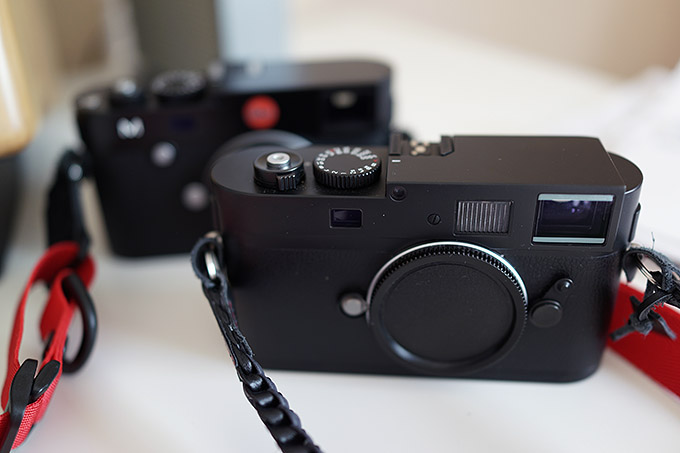
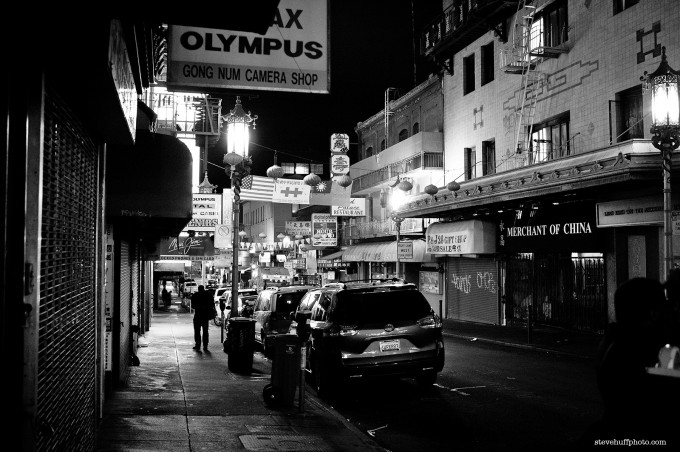
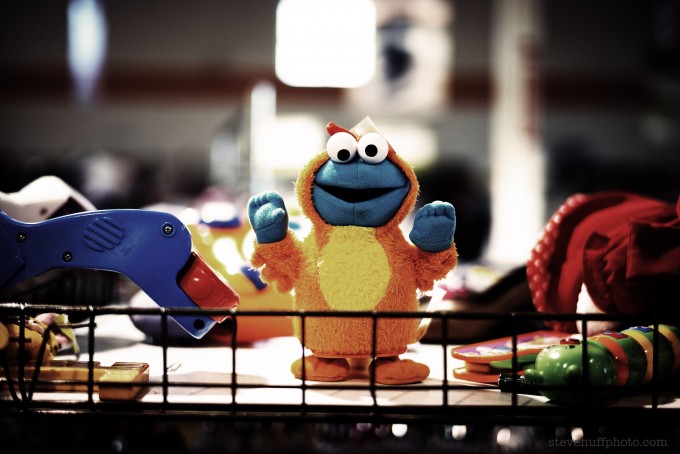
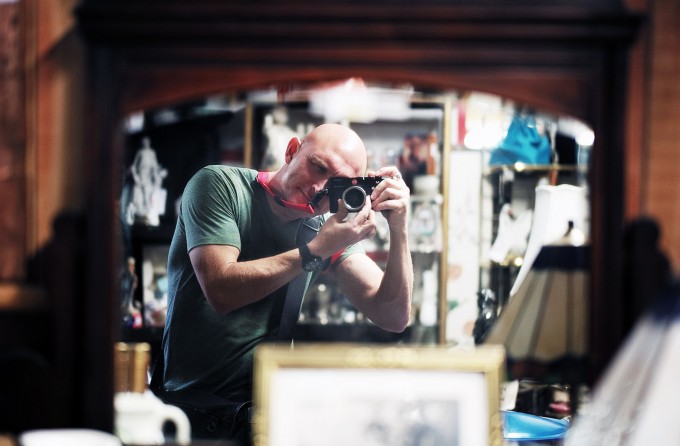
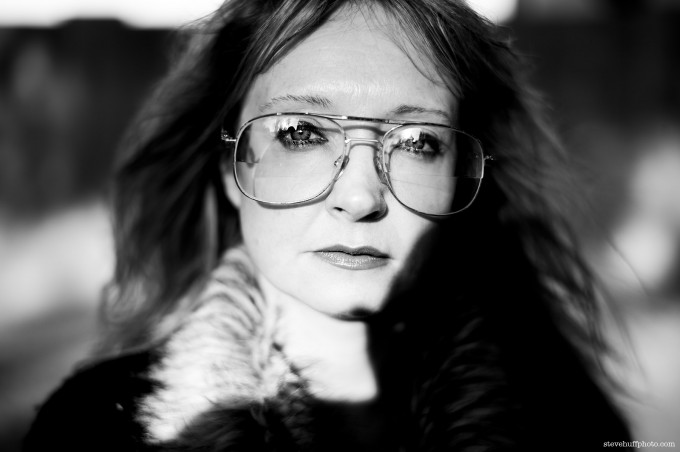
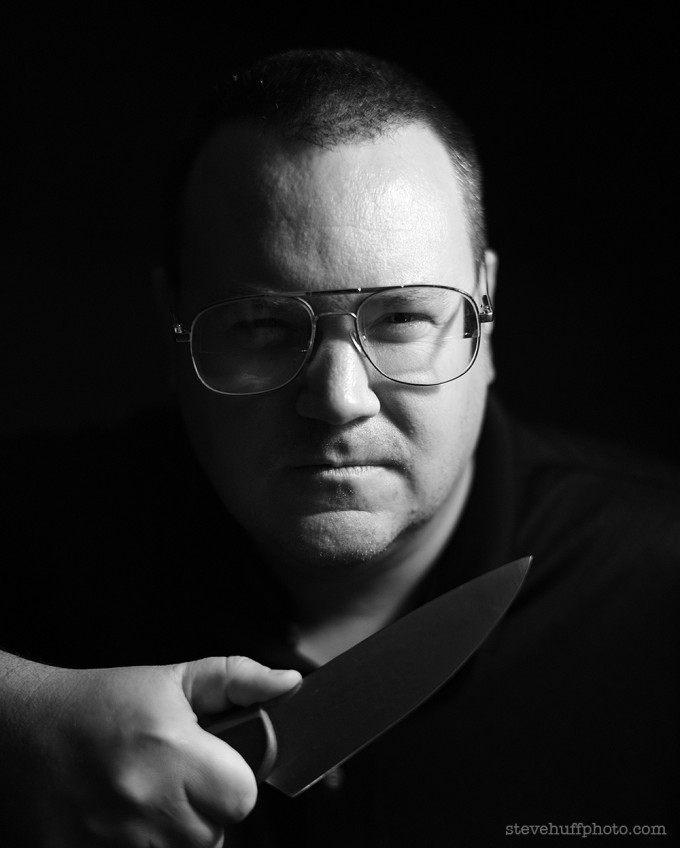
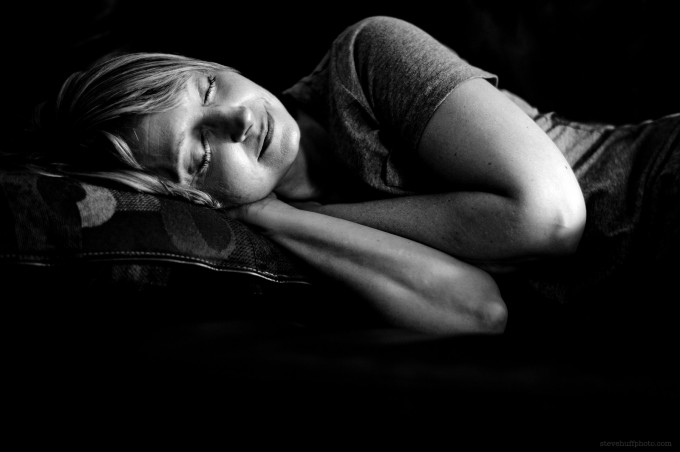
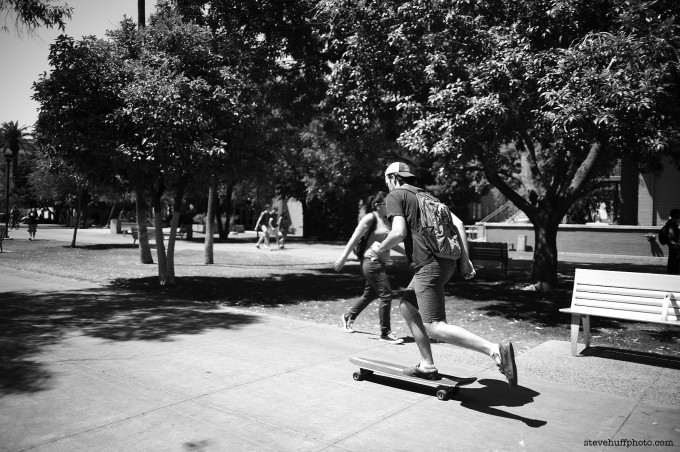

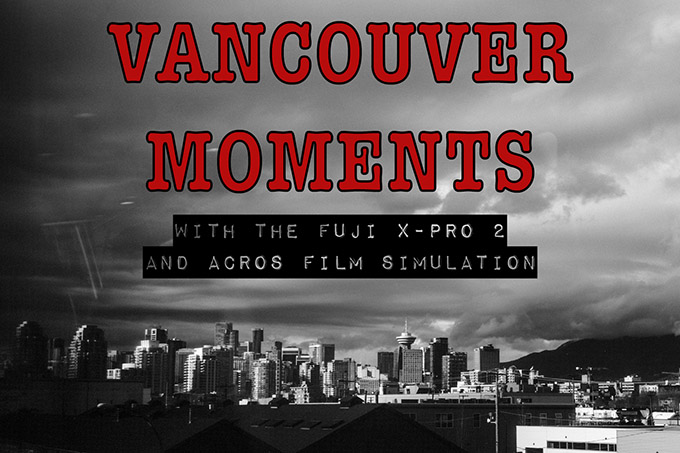

if i had those two, i would also choose the MM to keep since there’s a lot to choose for color photography.
Wouldn’t the obvious choice be to keep the RX1 and hope for a M 240 MM?
I’m sorry that I upset you Neil. I apologise. Please don’t take it to heart. I absolutely apologise.
“Plenty of quantum theory” ,well that’s nice.
Oh, I’ve read for many years, Neil, and read plenty of quantum theory, thanks.
“mystical” appeal of film photography endured, as in Neil’s description (above) of “..the profundity of beauty of film..” ..whatever that may mean. (I find it’s just a sloppy way of writing, without really working on conveying what the writer’s intent on saying.)
David ,your lack of understanding is indicative only of your lack of understanding.
Perhaps you should read a little more,…try a little quantum theory.
“..for a pro taking thousands of shots per month I can see some sense..”
Agreed.
“..I still cant find a compact digital camera to produce images that match ones from my decent compact film cameras..” ..We-ell, compact film cameras usually shot onto a 36x24mm ‘sensor’ (piece of film), but you don’t find many compact digital cameras which have that size of sensor (Sony RX1 excepted). And lenses for film-based compacts could be short and tiny – and thus especially ‘compact’ – because their lenses could sit close to the film, and deliver a wide spread of light onto the film, whereas lenses for small digital cameras generally need to be ‘tele-centric’ (delivering light perpendicular to and straight onto the sensor) and therefore longer, and not so ‘compact’ ..or else the sensor-&-lens together have to be specially designed to catch peripheral light from a more compact, but not ‘tele-centric’, lens ..hence the fixed, non-interchangeable lenses of the Leica X1/X2, Sony RX1, Fuji X100, or your DP1, etc.
It depends, too, to a great extent, how much time and effort you’re happy to put into ‘electronically developing’ your pics with photo software on a computer.
If you accept that shooting your pics is just a part of the business, and then electronically ‘developing’ (adjusting and tweaking the results of) those pics is the other necessary part, then you should be able to get terrific results from far-smaller-than-full-frame digital compacts ..but it just depends on how much time and effort you do want to put into it.
I’m perfectly happy with my Oly OM-D (or E-M5, or whatever) and the more compact Canon Ixus 510HS, and the little Fuji F550 ..but maybe I’m not as demanding as you are. (In fact I just bought – for only €45! – a second-hand Contax iR4 – from 2004 – it has only 4 megapixels, a tiny Tessar f2.8 lens, but gives wonderful snapshot results, and it measures only 3.5inches x 1.5inches x 3/4inch – really compact! ..but, sadly, with no zoom of course).
I’m not that bothered about “image quality” really ..it’s the content of a picture which means most to me. So maybe we have different priorities.
I would never be able to cope with the restrictions of your DP1: I don’t care about intense, ultimate image quality; I prefer speed of use, preferably with a decent zoom and with low-light capability, and light-ish weight.
Horses for courses – or, as you put it yourself Paul, “Choice is always King”.
Interesting points but I still think common sense has taken a pasting – a quality film camera could use colour or b/w film now if one owned the two Leica’s Steve had with decent glass thats maybe £15-£17k! Thats a lot if film even with the associated costs you rightly highlighted – for a pro taking thousands of shots per month I can see some sense but for the rest of us ………! Plus although Leica’s hold their value better than most depreciation can be horrible – ask a M8 owner , X1 and 2 and even M9 thesedays are dropping fast. I still cant find a compact digital camera to produce images that match ones from my decent compact film cameras , my DP1 Merrill gets close at times and destroys all other digital caneras below £10k in terms of IQ but still falls short at times 🙁 Choice is always King , thanks , Paul
It’s better to think yourself than follow other choice 😉
Why do you need this “M bustard” from Leica?
For such colors is better to have S2 or so.
Good choice Steve!
M9 colors are true Leica classic.
M240 is not good enough to spend additional 7K$.
After I got samples and reviews of M240, I decided to keep M9p and skip M240 at all,
Will wait until Leica release a next-gen M camera.
M240 is cool, but it is not what we expected from Leica M.
If I will need such image look, I better spent 3-5K$ for Nikon or Canon and 35/f1.4 lens.
Thats all.
End of a story.
Paul,
“..digital is all facts and numbers (endless drivel..” ..but magazine writers (there were no bloggers in the eighteen seventies, nor in the nineteen seventies) didn’t have access to the intricate details of the film manufacture process (the size and orientation of the ground-up silver compounds, the composition of the backing or binding (gelatin) compound, the specifications of the anti-halation or lubrication layer) and so those things generally didn’t get written about.
Commentators – magazine writers in Amateur Photographer, or Popular Photography, or Phot’Argus – wrote about the effects these materials had, and concentrated on the look which these materials produced. But how d’you describe a “look”? ..So out came descriptions like “gentle”, “artistic”, “dreamy”, “harsh”, “distinctive”, “the Leica glow” and other subjective – and anthropomorphic – terms like “soul” and “feeling”. And these terms were ascribed to lenses, too: “characterful”, “glowing” (meaning that aberrations and reflections weren’t sufficiently corrected, and light spilled around inside lenses, spreading out from highlights into the surrounding dark areas).
So a kind of mysticism came to surround cameras and film, because of the descriptions used: but it was just, really, a set of simple – and precise – predictable physical and chemical reactions; photons steered through melted silicon (glass) hitting bits of silver nitrate stuck onto glass or onto a plastic strip. Areas of the silver nitrate were (are) converted into silver when hit by light, and the unconverted silver nitrate (or chloride, or bromide) gets washed away and you’re left with a ‘negative’ picture (darkness, where light had hit the glass or film) of whatever was originally focused onto the glass or film.
Few people – except those interested in making their own ‘developer’ to reveal this ‘negative’ picture (like Geoffrey Crawley, of blessed memory) – bothered writing about the “facts and numbers (endless drivel” involved in these processes, and so the “mystical” appeal of film photography endured, as in Neil’s description (above) of “..the profundity of beauty of film..” ..whatever that may mean. (I find it’s just a sloppy way of writing, without really working on conveying what the writer’s intent on saying.)
But shooting – and developing – film is just as much “..all facts and numbers (endless drivel..” as is shooting with an electronic sensor ..but maybe you haven’t bothered with all the various descriptions of development times, development chemistry, development temperatures, agitation (shaking and stirring) and the various combinations of potassium bromide and monomethyl-p-aminophenol hemisulfate and hydroquinone which people swear by in order to get their ‘perfect’ development – to suit their particular tastes – of all the different brands and varieties of film there have been, such as Pan F, Verichrome Pan, FP4, T-Max, Plus-X, Acros, XP-2 and all the rest. There have been just as many facts and figures, and just as much “endless drivel” written about films and development as has been written about electronic sensors.
You say “..I can’t see spending £6k on a body alone worth it to me to replicate something we were doing for years with a £5 roll of b/w film”.
But dedicated black-&-white film photographers didn’t just spend £5 on a roll of film: they created a darkroom, and bought an enlarger, and trays and sinks and development tanks and safelights and a high-quality enlarging lens or two, and an enlarging frame, and a grain-focusing microscope, and a timer, and the relevant development, fixing and washing chemicals, and host of other paraphernalia. That £5 per roll is just a little bit of the iceberg; there were all the ‘submerged’ costs, which you didn’t mention, of developing that £5 roll of film.
If you bought only a £5 roll of film, you were leaving all the other bits of the developing and printing (or scanning) process to an outsider – like Boots the Chemist, or Snappy Snaps, or Jessops, or perhaps some other specialist lab – who would then, of course, charge you for their services (£13 maybe) but who would give you no control over the development and ‘dodging and burning’ and printing of your own pics.
So you paid a bit more than £5 ..I’d guess probably more like £16 or so for 36 pictures.. but you’d have had to accept just what the (automated?) developing lab gave you – unless you afterwards manipulated their scans of their development of your pics. £5 was only one element of what you paid.
For people with loads of cash, £6k for a monochrome body alone may be small beer and justifiable ..perhaps they may spend £6k on a fancy watch too, and £10k on the biggest, highest-definition big screen TV as well.
For others, £6k on a monochrome body (if they already have some Leica-fit lenses) may be worth it, to have the fullest control over their black-&-white imaging (without the interpolation (guesswork) which other cameras necessarily produce through having a set of coloured filters over the pixels) ..and without handing over their images to an outside lab, and without all the mess of setting up a wet darkroom, and without the restrictive low-light, low ISO, range of most b&w film.
“..digital b/w has always been poor..” you say ..and that’s partly because, until the M Monochrome, there’s been only about one third of the advertised resolution in digital black-&-white because of those red and blue filters over many of the pixels. The MM has no coloured filters, so you get the full impact of all those pixels without any dithering or tweaking. That’s why it has a high ISO range, that’s why it has more “film-like” imaging than the usual kind of sensors, and that’s why the MM is a different kind of camera from “traditional” digital cameras.
And once you’ve bought it, you don’t have to keep spending £5 plus developing, scanning and (possibly) printing costs for every thirty-six pictures you shoot. Nor d’you have to set up a darkroom or buy chemicals and printing paper. Nor spend 15 minutes developing a roll, and another 10 minutes dodging, burning and wet-developing and fixing each print.
As you say, Paul, “Choice is a wonderful thing so to each their own”.
My point I think is made, digital is all facts and numbers (endless drivel about sensors), film is soul and feeling, you either get it or you don’t. I use digital and film, both are fine but digital b/w has always been poor and I can’t see spending £6k on a body alone worth it to me to replicate something we were doing for years with a £5 roll of b/w film, Leica must be laughing all the way to their bank – as always 🙂 Choice is a wonderful thing so to each their own 🙂
“..a digital file soon runs out of steam,as it zooms into cubism..”
I think that depends on its initial resolution, and I guess you’re talking about a 36x24mm sensor. You can zoom into medium format digital pics and still have a fair bit of leeway before “..it zooms into cubism”.
On the other hand, you can enlarge 110-size film and it soon smears into mush, without – I think – any “..profundity of beauty”.
I think it all depends on what you start with, and how large you want to display it, and how you display it, and how far away you are when you’re looking at it, and which lens you used when shooting it.
Beauty, as they say, is in the eye of the beholder. That’s to say, beauty can’t be objectively proven, can it? It’s all just our individual opinions, don’t you think?
David,you’re opinion is entirely valid,however the glacial smoothness of a digital file is skin deep,the profundity of beauty of film,at the moment,escapes digital.At ANY magnification film grain retains its attractiveness whereas a digital file soon runs out of steam,as it zooms into cubism.This depth seems to come across into the final image.
I hate you, Steve… I made my mind to chase for M240 in France next week, but now there’s a Monochrome on my table, which I purchased today! 😉
“..certainly better quality images can be produced with regard B/W than the MM will ever muster..”
..Really?
Let’s take a look: ISO of the MM? ..ISO 320/26° to ISO 10000/41°
Let’s see what’s the highest ISO film I can usually buy.. Ilford Delta 3200, perhaps ..but that’s rather grainy, and look what happens to it when it’s pushed to 6400 or 12800! Grain the size of golf balls! And with the MM at 10000 ISO? ..small, almost unnoticeable grain, and still with a huge range of detail in highlights and shadows.
In many cases film can somewhat beat digital. But in black and white? I don’t think so.
Jim, its all true , except that I bought the Caddy last year, and last year did 1500 miles doing the Civil War battlefields . This year we headed south for 1800 miles. The Lincoln was a paragon of mechanical virtue, the Caddy less so. But 3 years ago drove an 80 year old car from “Peking to Paris” so a 60ish year old to New Orleans didn’t seem so bad, after all its what they were made to do, and as for Mk 2 Continental , mega respect ,its a car we love, and my friend who owns the 56 Lincoln is in major heat for a Continental Mk ll . As this is camera site and not a car site I will stop here . All the best A.
Definitely the right choice Steve! The MM apart from producing amazing monochrome files is surely destined to be a future Leica classic. It could well prove to be a one off that will never be updated/replaced.
Or just use a film camera and choose between a roll of colour or B/W film ? Simple, cheaper and certainly better quality images can be produced with regard B/W than the MM will ever muster 🙂 Just a thought 🙂
Wonderful decision Steve !
You have Proven ~ there is no better
tool for timeless imaging.
I look forward to your professional
growth via. with its’ use ! W o w !
Adam. If most of your story is true then you’re far braver then I. Since I have 1956 Continental Mk ll that I would no more trust to drive from your Boston to New Orleans equivalent then I would a Segway.
Otherwise, great tale.
Best.
I’m waiting for another manufacturer to dare make a monochrome camera with a modern sensor. Fuji? Sony? Maybe even Leica–how long will it be before they release an MM Typ 240?
Well after several side by sides over the last few weeks the M 240 could not keep up with the MM in low light, tonality, details and sharpness and the MF look. On the other hand, the RX1 could meet or exceed the M with a 35 cron though the cron would give a different OOF rendering than the Zeiss. Both are great cameras but I bonded with the MM and needed some cash so that one stayed and the M went. I also enjoy that the MM can use a classic $250 LTM lens that gives me output I enjoy over a $4000 Leica lens (and just s sharp). To me, after careful consideration, the MM was the no brainer for me, and that is after using them both for weeks..every day. Key word is “for me” 🙂
I love the M 240 though and will eventually get one again when I can because I loved the new body, features and LCD 🙂
Good choice Steve.
I have my Mono on order. Should have been here by now. Soon.
G
I Read your M240 review went to the shop, thought the 240 the first Leica force fed on fries, (or chips as we would say). You kindly replied “grasshopper, its not a fat Leica its just big boned, and I should see it as a Vogue model compared to a full frame DSLR”. I went back to the shop, let it wallow in my hand, and marveled at the live view, the focus peaking, and put my name on the waiting list. But doubts nagged so I thought lets have a test. Grabbed my M9 and my Monochrome , flew from London to Boston, bought a 56 Caddy, and drove to New Orleans, and decided if I shot more colour than B&W the M9 was outta here and the 240 in. If I shot more B&W than colour then the to hell with the M240 , who needs it, and buy the 50mm APO ASPH ‘cron instead. 1800 miles later, I am in love with my monochrome, creamy B&Ws that are so rich they seem like colour to me. Two to one the Monochrome won. It was always the camera in my hand. Now I ain’t a pro lensman , just a happy retired bloke who has been lucky and if you want a gander at my sloppy snaps here they are http://www.flickr.com/photos/77437968@N00/sets/72157633354854469/ nearly all shot on the Canon 50mm 1.2 , as I wanted a lens roughly contemporary with the the car, the colour shots mostly used a 28-35-50 tri-elmar or a Zeiss 21 2.8. I have owned every M (yeah even an M1) except the M8 and the MP, and the Monochrome is the most addictive make me want to shoot camera that I have had since I got my first M2. So though less versed than yourself in the corralling of photons, I came to a similar conclusion. Cheers Steve and keep up the much appreciated work.
I think if you sell a camera and then find that you miss it enough to buy it back ,we’ll that camera is for you,forever,fullstop
Wow…..surprising decision. For me the M240 would have been the no brainer….it does colour and gives you 90% of the B&W quality of the M. With that said, I don’t also own the RX1:)
Anyway, to each their own…not the decision I would have made but it’s good we all have choices!
Makes sense to me. The Monochrom is the only Leica I’ve ever seriously wanted. It does what it does so very well, and nothing else comes close, at least at higher ISOs. You have lots of fine cameras for shooting color and will have others coming and going, but it’s unlikely you’ll ever own a better black and white camera. Enjoy!
Hey Steve,
Do you think Leica will make a M Monochrome (Type 240 version)? or did I just start a rumor 🙂
Glad you made a good decision and gained some relief (temporarily). Now you have more time to enjoy shooting with the other three cameras.
You sure don’t need validation from me but I think you made a good decision and as you said in a few months you can reverse it if you change your mind. To me the MM is the right choice because it is so unique. These days with the plethora of choices you begin to see that most of them all do pretty much the same thing and to me none are really all that exciting. If you lived in an area with a little more contrast I believe the choice would have been even easier. So enjoy that MM! For me the only other really unique camera out there right now is the Sigma Merrill. I’m waiting for the used prices to drop and I will snag one of those.
Oh I’ve forgotten… Thank you to share your impression and your feels so well. It’s always a pleasure to read your articles Steve. Have a good week end 😉
The MM have something of magic. Not an usual camera, it’s a Leica with no color… So, it’s special and It makes his identity and his difference with the ME, M, M9, M9P and M8… Your decision is really coherent and I’m sure, I’ll choose the MM if I change my M9. For the Monochrom’s touch is so magic ! Best regards Steve. 😉
You know my opinion 🙂
While I do not have a MM… yet, I think you made the right choice.
I keep thinking of what it would be like having a MM in my bag along side of my M9. All of those practical decisions to make like which lens on which camera? Or which camera to grab for a particular photo… or, did I take the yellow filter off the lens that I just switched or not? Then there is the weight and the complexity of the kit when now I often just leave the house with a tiny little domkie containing my M9 with a mounted 35 Summicron,a 90 Elmarit in the side compartment and my cell phone. Or even just the M9/35 with a 90 in my jacket pocket. Too many decisions make for lost opportunities.
I do not think B&W is an “oddity” at all. I have other color cameras anyway (RX1 is amazing) so I will still shoot color, but the MM is special. You have to use one for a while to understand.
B&W is cool, but it is also an oddity. It is something you add to a picture only if it is right for the picture (a bit like HDR or instagram or extreme highlights). I remember shooting TMAX with my M4 and thinking – this would have been cool in colour. Thing is, you can make B&W from colour, but not the other way around…
If you only have an MM for M lenses, all your glorious M lenses will not be allowed to capture the glory of nature (and your family) in all its/their tonal glory… But hey, as long as you are happy, who cares what I think!!!!
wow. I could bet you would sell the MM!! You have some balls! 🙂
I am on the verge of selling my M8u to get the MM as my only camera.
My take is that simplicity is key in photography. Also, the MM brings a unique look to its files that are hard to replicate in PP. Last point, being very good at high ISO, it has the potential to be my camera for many years to come.
You made it easier for me to choose which camera to bring to Seattle; MM it with with 35mmFLE
I think you made the right decision here Steve.
You should print the photo of your fiancee on the sofa using a good metallic paper and hang it on your wall and you’ll never regret your decision. 🙂
K
Well, you have other two cameras capable of fine colour images, so your decision makes a great sense to me…
The Indiana Jone reference was not lost on me. You win the Comment Of The Day Award!
Well, well, not only you continue to inspire (me), but you also surprise (me).
Keep up the good work.
Hi
I do understand your hesitation, both are great cameras. ( at first i wasnt too keen about the 240, but slowly i learnd to appreciate it )
The Leica MM is unique and i am happy you decided to keep it.
I own one and i dont think i will ever sell it.
Thanks for sharing your doubts
Danny
Even before reading the piece, I was screaming, “KEEP THE MONOCHROM!!!” I still shoot Tri-X (my all-time favorite film – color or b&w) in a Yashica rangefinder and have converted my website to all black&white. From looking at the Monochrom images I have seen on sites like flickr, the tonality of that camera resonates with me. Personally, I am like you, Steve. Nothing produces files like the Monochrom and I am far from a “Leicaboy” as some call you.
While some folks have a penchant for color, I love black&white and have even converted my Epson inkjet to a black&white printer using Jon Cone’s Piezograpy inks. I applaud your decision. As for me, I am using a new toy in the Fuji X100S. I tried its b&w JPEGs but, OOC, they do not touch the tonality and rendition of the Monochrom. But a Monochrom is fiscally out of my reach so I enjoy the high ISO capability of the X100S and convert in post processing.
Enjoy your time with the Monochrom. Shooting in the “old school” way of black&white has a tendency to get to look more at the light and less at the pop of colors. For me, it becomes more about content and less about eye appeal. It gets a viewer to spend time with an image and decide what the image is telling them.
Anyway, keep the good times rolling and keep on SHOOTING!!!
I think you made the right choice. The monochrom is definitely my dream camera. One day….
I think you absolutely made the right decision. While I’m sure the M240 is great in it’s own right, the Monochrom is unique (at the moment any way).There’s nothing else like it out there and from everything I’ve seen it produces unique and stunning results. Can’t wait to see more of your work with it, and I’ll be interested to see what you think a year or two down the road.
Regards
Thomas
Hi Steve,
I think you have made the right choice. Having followed your site over the last couple of weeks I got the impression that you enjoyed taking pictures with the MM much more. And this in spite of your extremely positive review on the M240. One could feel that your heart goes out to this special something which is called MM, although from a rational point of view it does not seem to make sense (only B&W, and a 1000 bucks more, really?)
But as you are saying yourself, we are here on Earth to find out what makes us happy, and if this is a camera which is perfect at the one thing which it was created for, then go for it!
Which brings me to the point of congratulating you on your site (as many others do). I think you have found a wonderful way of combining your passion with supplying very helpful information, and it is a joy to read your contributions as well as the daily inspirations. Being an owner of an M3, an M5 (yes, the big ugly beast) and an X100 myself, your site has brought me back to a love for rangefinder photography which I had neglected for much too long.
Keep up the great work! And enjoy the MM!
Best,
Robert
Right decision. There are lots of excellent colour cameras, but only one monochrom.
Actually, I’m a colour photographer myself, but I very much appreciate B&W when it is printed beautifully.
I’ve just bought Cartier Bresson”s Paysage, which contains prints of beautiful tonality as well as his hallmark composition of setting and figures.
I look forward to seeing your pictures taken with the MM. Hopefully you will print them as well as show them on the web, which cannot do justice to the beautiful image quality of B&W prints at their best.
Goff
Good decision Steve! The MM is a true classic – a legend in its time. You have, IMHO, made some of your very best images with that camera.
Whatever Mojo it gives you, keep them coming. You can always get an M9/P for a very reasonable price in great condition. But the MM will see you right for many years to come… anyway, it gives you pleasure and your images are a shinning testament to that.
Warm Regards
Jorge Rubia
(don’t quite know why my user name has changed… have to sort it out …grrr)
Hmm interesting … I would have kept the M240 for it’s versatility and use the Fuji X100s for B&W, the X-Trans sensor is great for B&W … see some exemples : http://my-finepix-x100s.blogspot.com
Difficult choise indeed ! 😉
Tough choice, but a rich man’s problem.
You probably made the right choice, if only because the M is so rare and easy to sell with no loss.
First time commenter, long time reader.
I think you made a great choice, keep the mono and just use your RX1 for color stuff.
Keep up the good work 🙂
I think that the M (type 240) is a mediocre camera. It performs better at higher ISO than its predecessors (M9, M-E, M9P or whatever the label says) and it has LiveView ..but so have dozens of other cameras!
To use the LiveView, you hold it at arm’s length (like dozens of other cameras) or you buy the add-on electronic viewfinder (like many other cameras).
It has a -f-a-r- quieter shutter than its predecessor, and it shoots video. But the video isn’t in the same league as the full-frame Canons, nor the quarter-frame Oly OM-D.
So what is the M’s Unique Selling Point? It’s a full-frame camera with small interchangeable lenses ..but the M9 was that. The M has no stabilisation, so it’s not a wonderful full-frame video camera (in the way that the OM-D gives great video) ..it’s really confusing: you’ve a choice of three viewfinders to use on the M (the optical rangefinder, the rear screen, the EVF) but the easy “spin-the-wheel” exposure over-ride of the M9 has been replaced by the awkward hold-in-a-button-on-the-front-while-turning-a-wheel-on-the-back.
The M9 was a big leap forward: full-frame digital small lens rangefinder.
The M is only a small further step forward: LiveView, so it can be used with any lens (with a relevant adaptor), and video. But so many other cameras do that already, so the M doesn’t really have a USP.
The M is heavier and (slightly) bigger than the M9/MM, and is a peculiar hybrid which can use zooms, but the Leica zooms have only very short ranges; many other cameras are far more versatile.
The MM does one thing very well. The M does several things, but none of them in an outstandingly revolutionary way: zooms, yes, but they’re very limited and very bulky; EVF, yes, but you’ve then lost the external stereo mic facility for shooting video; external mics for video, yes, but you’ve then lost the EVF capability; long telephoto lenses, yes, but there are no stabilised Leica lenses and no in-body stabilisation in the M.
I’ve used one, and I don’t find it any big deal.
You made the right choice, Steve.
Great moove Steve. I understand now why we had this conversation about the MM qualities 🙂
The MM is inspiring, rewarding and so simple, a joy for everyday shooting !
I think you made the right choice. I have followed your site thru the M-9 and the M-9P and decided I wanted the M-9P. Couldn’t find one when I had the money. When the Monochrom was announced I got on the list at several places, but nothing. Finally I got an M-E so I could return to shooting Leica after a 40 year break. My intension was to shoot the M-E until I could get a Monochrom. After a month with M-E I got the call, my Monochrom was in. I had to do some real financial shuffling to get the Monochrom. The biggest problem was that I had shot the M-E just long enough to realize that I couldn’t part with it. I really liked what it was doing with color. So now I’m totally broke but I have the best of both worlds. I’m really happy with my choice and I don’t see the need to upgrade to the M. I’ve got the Monochrom and a funny colored M-9 at a discount price. Love them both. Happy shooting.
I’ve been following your blog for a few months now, and I’d just like you to know what an great inspiration you are. Found your blog when browsing the net for info on the Leica M-cameras and thanks to you I bought an Leica MP a few weeks ago. ;-p Had a bit of a rough time deciding on what lens to buy, but I’ve decided to go for the 35mm Summocron ASPH. Anyways, keep up the good works, mr. Huff. As I said, you are a great inspiration and an excellent ambassador for Leica.
Regards
From_Norway
Love your snap of your fiance Debby in the oversized glasses.. she reminds me of peggy lipton in the old 70’s tv series Mod Squad.. the monochrome would been my choice too 😉 happy snappin steve
Hi Steve,
I believe you made the right choice, considering you have the Olympus and Sony laying around. I never really liked the implementation of the M and consider the MM a “purer” tool. AND, you gotta love those CCDs… 🙂
Anyway, a great read as always.
Take care,
Henric
Stockholm, Sweden
Steve,
As you know, I also own both cameras. If I had to give one up, I’m pretty sure it would be the M240. Like you and others I, gravitate towards the MM. Good choice!
Gage
I’m glad you keep the MM. Really looking forward to seeing more of your B&W photos.
I am doing exactly what you are doing TomN. I shoot B&W jpeg + RAW with my X-E1.
As I have followed your site daily, it is quite apparent you favor B&W and the daily inspirations you publish are also leaning to B&W. Because of your love of that genre it makes perfect sense that you would make this choice. Perfect tool, for your craft preference.
BTW I prefer the photo of your fiancé wearing the glasses. Perfect focus, perfect model.
Looks to me like your life is good.
Thanks for sharing.
Steve
Great choice, i would have done that too… i doubt there will ever be another MM but I’m sure there will be lots more M’s to come…
Easy choice- the m Monochrom is the first practical digital monochrome camera, builds on the M9 technology.
The M T240- new technology, sensor from a new company. The units produced a year from now will be “tweeked” and bugs ironed out.
Well, it was taken into consideration of course.
Yes, I have seen these and met him in Berlin during the MM event. Great stuff.
The M Monochrom is the first Practical Monochrome Digital camera that has been introduced to the market. It’s probably the peak of CCD development in terms of low-noise and uniformity. It builds on the M8 and M9.
The M Type 240 is in the beginning of it’s production cycle. Cmosis will “tweek” the sensor, Leica will iron out bugs. Waiting a year to 18months- will get a more mature camera.
Congrats Steve for going with what makes you happy;) My philosophy of life as well!
Please check out the work of Jacob Aue Sobol if you don’t already know it-very inspiring videos of him shooting the Monochrom in Moscow, Mongolia and Beijing with on camera flash creating his own special look and style:
http://blog.leica-camera.com/topics/special-series/jacob-aue-sobol/
http://www.auesobol.dk/
MX
hi steve
yes, that the way i think too, everything that build for one purpose, and one purpose only, that’s mean “SPECIAL” …
and u mention to that “enjoy to use” yes my OM-D is more enjoy to use, rather than my EOS 600D, sometimes the “fun” and “enjoyable” factor, does make the picture better rather than high tech spec, dynamic range, high iso bla bla bla … 😀
best regard
denie from indonesia
Steve, boy I know the difficulty in these kinds of decisions, believe me! Much like dw3645 above, I shoot the M6 with Tri-X and a 50mm Summicron. I know what to expect and how my shots will look. I do hardly any post processing, very little. For digital I just swapped my M8 which I felt was clunky and a bit difficult to use for the Fuji XPro-1 with the 35mm F/1.4 lens. This is an awesome camera and the beauty of it is the quality of the B/W files which rival (almost) my film shots. This is accomplished by using the correct film simulator in SilverEfex Pro2 and not much else, some small contrast and occasionally an exposure adjustment. Very pleased with this combination. Much better images than the M8 in that they require far less fiddly processing and produces a far “richer” file. So this is my “Monochom” but for a fraction of the price.
I love film but have decided these are two completely different approaches to making photos. I consider film in the M6 as “photography” and the XPro-1 as “digital imaging” two very different approaches. I’ve been able to marry these two and get the best of both in this way. I rarely shoot a color photo but always have the RAW file in the Fuji so if I feel the need for color later I always have it. The Fuji is set to take a RAW file and a JPEG in black and white. I shoot it just exactly like the M6: ISO 400, full manual settings and use the light meter in the optical viewfinder, no previews so I’m not tempted to “chimp”. That way the transition between the two is much more transparent. If I need a low-light shot in the Fuji I can always bump up the ISO via the function button.
Gotta admit though the M6 is my favorite camera to use. I would certainly own a MONOCHROM if I could afford it, but feel this process gets me very close.
How about an article about how you process your B/W files?? Thanks! Tom
One look at that pic of your sleeping fiancée (what wonderful shadows and light), and I see your point. I look forward to more B&W images!
What I have now is a Leica MP, which I use to shoot B&W with. I shoot colour with myFujifilm X-E1 with Leica lenses. That’s the best of both world (for me anyway), and at a much lower cost.
Well done , I would have done the same.
I’m in S H O C K!
This MM takes me back to the ‘joy of photography’, I agree this is the camera for me as it is for you. Purely monochrome images have that timelessness.
Okay, now to pick one lens….
Steve, You chose Wisely.
Excellent choice. Enjoy, and happy shooting!
Ok, I’m going to mark this on my calendar then and see if you’re still using the Monochrom one year from today. You’ve definitely had camera/lens commitment issues in the past!
Joking aside, I think you made the right choice, as you certainly have a love for B&W, and the Monochrom creates unique images that are beyond what someone could do with a 5D or D700.
surprising and…well, simply well done Mr. Huff!
Hi Steve
As I’ve already said I do feel you’ve made the right decision here, however tough it must have been.
Cheers, Jason
Did having a Sony RX1 already influence this? 🙂
Tough decision Steve! Hope you haven’t lost too much sleep in making this decision. Looking forward to your work with the MM!
Good for you! Simplification is a tough road. I’ve always failed miserably. So nice to see success.
I would have kept both, but then again, I don’t have a site to run and other cameras to review. I also don’t usually sell anything I own; the curse of the packrat runs strong in my family.
Some day, I hope to own an MM of my own. And you better believe I’m not letting go of it.